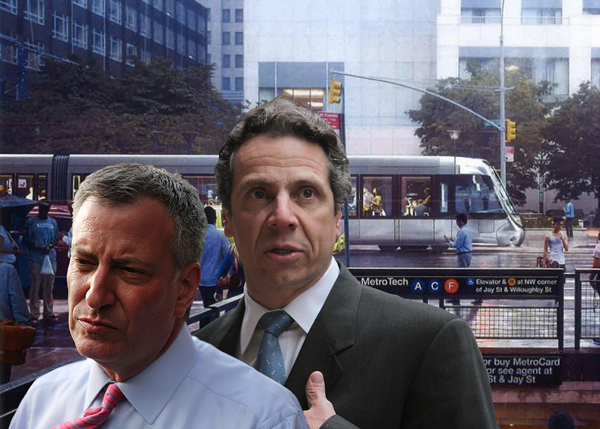Trending
Cuomo can easily kill de Blasio’s BQX dream
Planned streetcar crosses state-owned land

UPDATED, Nov. 10, 2:59 p.m.: Will Mayor Bill de Blasio’s feud with Gov. Andrew Cuomo doom the planned streetcar along the Brooklyn waterfront?
Although the city insists it will lift the $2.5 billion project by itself, the planned route crosses state-owned land, the New York Post reported, citing sources close to the project. This means it would need the cooperation of Cuomo, who isn’t exactly friends with the mayor.
“It is all about the governor,” one source told the Post. “This BQX will have to pass over state-owned pieces of land, and the governor . . . can just say ‘no.’” Meanwhile, the MTA has yet to announce how it will integrate the new 16-mile streetcar into the subway system.
“We’re committed to the streetcar project and, right now, we’re in the midst of a brass-tacks analysis of the block-by-block engineering costs and revenue projections. We’ll be discussing those results with New Yorkers in the months ahead,” a City Hall spokesperson said in a statement.
“We take the Mayor and his team at their word when they say they are committed to this project and that none of the issues raised in today’s story are concerns,” a spokesperson for advocacy group Friends of the BQX said in a statement. “Of course there is going to be bureaucratic resistance to a project of this magnitude.”
De Blasio announced the streetcar plans in February 2016. In April 2017, Politico reported that the project might not pay for itself, citing an internal city memo. Numerous real estate interests are behind the push for a street car, which would boost property values in a number of Brooklyn and Queens neighborhoods, some of which lack mass transit options. [NYP] — Konrad Putzier




